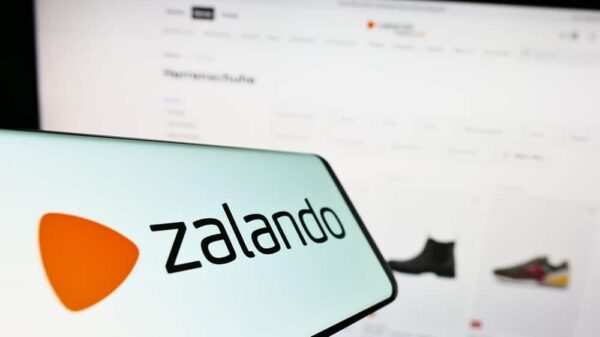The journey of cryptocurrency mining is fascinating, kicking off with the launch of Bitcoin back in 2009. Imagine a time when Bitcoin was so easy to mine that anyone could just fire up their computer and start raking in rewards. Those were the days when the computational demands were relatively light, allowing everyday folks to get in on the action. However, as time went on and Bitcoin’s popularity grew—like, a lot—the competition heated up. More and more people dove into mining, pushing the complexity of the puzzles and the difficulty levels way up. This meant that miners had to adapt quickly, evolving from using humble CPUs to more powerful GPUs and, eventually, specialized hardware known as Application-Specific Integrated Circuits (ASICs). With the rise in mining difficulty, the need for collaboration became clear, leading to the birth of cryptocurrency mining pools.
So, what exactly is crypto mining? In simple terms, it’s all about solving tricky mathematical problems to validate transactions and secure the blockchain—the digital ledger that keeps everything in check. But let’s face it: if you’re thinking about going solo in this competitive space, you might want to reconsider. Solo mining has become quite the uphill battle because of the soaring complexity of those mathematical puzzles, along with the ever-increasing costs of electricity. This is where mining pools come into play, offering a lifeline to individual miners struggling to keep up.
A cryptocurrency mining pool is essentially a team of miners who join forces. They pool their computational power to increase their odds of cracking those cryptographic puzzles and cashing in on block rewards. Think of it like collaborating with others on a group project—you can tackle challenges more effectively by working together. For instance, the White pool is designed with transparency in mind, offering straightforward fees and clear policies. Participating in such a pool gives professional miners a chance to engage in mining without the fear of shouldering all the risks and costs associated with mining alone.
How does this team approach work? Well, a mining pool slices up the mining task into smaller, manageable parts, or shares. Each miner in the pool gets assigned a specific share of the work based on their hardware’s hash rate, which refers to how quickly they can perform calculations. The pool operator ensures that the workload is distributed fairly and combines the results to solve the puzzle. When the pool successfully cracks a puzzle, the block reward is shared out among the members according to how much they contributed. Mining pools often use streamlined protocols like Stratum to keep everything running smoothly.
To put this in relatable terms, think about a group of friends working together to plan a party. Each friend takes on different tasks based on their strengths—one handles the invitations, another deals with decorations, and someone else takes charge of food. In the end, the party comes together much more efficiently than if one person were trying to do it all alone. That’s exactly how mining pools function, assigning roles according to computational power for optimal results.
Choosing to join a cryptocurrency mining pool comes with a host of benefits that can be quite appealing to aspiring miners:
– Increased earning potential: When you band together with others, the combined computational strength means you’re more likely to earn rewards consistently. It’s like playing a game where you get more points for teamwork!
– Lower resource requirements: Going solo often requires a hefty investment in top-of-the-line hardware and electricity. By joining a pool, you can contribute just a fraction of that power, making the whole endeavor more accessible.
– Risk mitigation: The unpredictable nature of mining rewards can be daunting for solo players, but in a pool, shared rewards provide a more stable income stream.
– Ease of entry: If you’re new to mining, joining a pool can be a breath of fresh air. It requires minimal investment and technical know-how compared to setting up a solo operation.
– Community support: Being part of a mining pool isn’t just about sharing hardware; it’s about connecting with others. You’ll have the opportunity to exchange tips, strategies, and experiences, creating a supportive atmosphere for everyone involved.
Now let’s talk about how rewards are divvied up in these pools. There are various payout methods that pools use, including:
– Pay-per-share (PPS): Participants receive a fixed payout for every valid share they contribute, which is great for consistent earnings.
– Proportional: This method rewards miners based on the number of shares submitted in relation to the total shares in a given round. It’s a clear reflection of each member’s contribution.
– Pay-per-last-N-shares (PPLNS): Here, only the most recent shares count, rewarding those who are consistently active over time. This keeps everyone engaged!
Most pools will take a small fee from the rewards to cover their operational needs, and being transparent about these fees is vital for maintaining trust among participants.
When it comes to finding a trustworthy cryptocurrency pool, there are several crucial points to consider:
– Reputation: Look into the pool’s history. User reviews and feedback can tell you a lot about its credibility.
– Transparency: Reliable pools should be clear about their fees, payout structures, and how they operate. A little honesty goes a long way!
– Fees: It’s worth comparing the fees across different pools, ensuring they’re reasonable while providing solid service.
– Hashing power distribution: Pools that support a balanced hashing power distribution help keep the network secure and less susceptible to centralization.
– Support and uptime: A good pool will offer robust customer support and maintain high uptime, helping you avoid missed opportunities in your mining efforts.
If you’re ready to take the plunge and join a crypto mining pool, here’s a quick rundown of what you’ll need to do:
1. Choose a pool: Do some research and identify a pool that aligns with your values—think transparency, reputation, and fee structure.
2. Set up a wallet: You’ll need a cryptocurrency wallet to receive your earnings, so make sure you’ve got that sorted out.
3. Download mining software: Find the right mining software that’s compatible with both your chosen pool and your hardware.
4. Configure settings: Input your pool’s server details, your wallet address, and any other necessary info into the mining software. It should be pretty straightforward!
5. Start mining: Once you’ve set everything up, launch your software and begin contributing your part to the collective effort.
Many mining pools offer additional features, such as dashboards that track performance and earnings, making it easier for miners to boost their contributions and efficiency.
The emergence of mining pools has revolutionized access to cryptocurrency mining, allowing more individuals to join the fun without the overwhelming costs typically associated with going solo. These pools simplify the entire process by offering organized infrastructures, smart task distributions, and automatic reward systems. This means that miners can focus on what really matters—earning rewards—rather than getting bogged down by the technicalities of solo mining setups.
By grasping the fundamentals of how cryptocurrency mining pools function and the benefits they provide, you can make well-informed decisions that resonate with your personal goals. Trusting the right pool can ensure that your mining experience is not only secure but also rewarding. So, whether you’re just starting or looking to expand your mining efforts, a reputable mining pool can be your ticket to success in the exhilarating world of cryptocurrency!





























